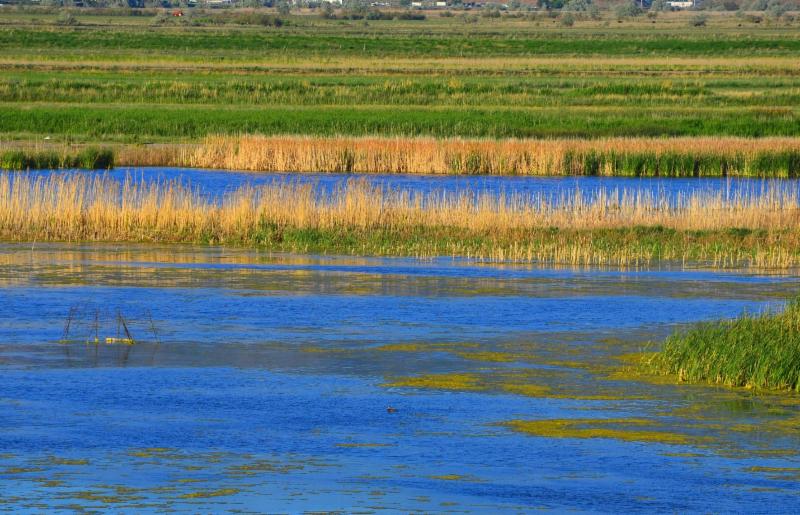
McGraw's Farm Bill Initiative Gets More Attention
By Sara Wyant/Agri-Pulse
Photo by LivingLandscapeArchitecture/flickr
Over the last few decades, U.S. farmers have made great strides in conserving soil and enhancing water quality, but there's a growing concern that more can be done, especially on water quality. At the same time, there's a realization that the amount of federal dollars to assist in this effort may be shrinking, rather than growing. So, what's the best way to address this challenge?
That's been one of the key questions for a group of veteran conservation leaders who have been meeting for about two years with the McGraw Center for Conservation Leadership, says long-time conservation policy expert Alex Echols, who served as the group's team leader. Their answers are now part of a new white paper,
"Heartland Waters Initiative, Advancing Precision Conservation in Agriculture"which they hope will gain consideration in the next farm bill. Several familiar names are on the team, including Chris Adamo, Dave Gagner, Lynn Tjeerdsma, and Roger Wolf.
"We really believe that, if we can align the economic opportunities with the conservation opportunities, we can significantly increase adoption," says Echols.
|
|
Maine's Iconic Sporting Camps Are Struggling
By T. Edward Nickens/Field & Stream
Photo by David A. Mitchell/flickr
When reports surfaced that many Maine sporting camps were struggling, and that the heritage of these places faces an uncertain future, I was flummoxed. How could that be? I've hunted and fished out of a half dozen camps over the years, and I've long believed that Maine sporting camps offered about the best deal going for a world-class sporting trip.
With those concerns in mind, I headed north last fall on a different kind of quest: Run down as many grouse as I could, of course, but also track down camp owners from four very different outfits to hear about the struggles-and triumphs-in a place as legendary as the North Maine Woods.
|
The Terrifying Life of a Laboratory Guppy
By Avi Selk/The Washington Post
Photo by Pinke/flickr
You're swimming around with your friends in a tank. You've been here for days. Food falls from the sky. Everything is fine.
Then suddenly, you're netted up and dropped into an alien world, all alone, just you and the glass.
You panic at first, but in time your courage returns and you investigate. Glass wall; glass wall; glass wall; glass wall. A scrap of plastic on the aquarium floor provides the only scant shelter. Hmm ...
Splash! A huge beak crashes into the water. If you knew what the University of Exeter is, you might wonder how a heron even got inside. Instead, you just cower under the plastic and wait for death.
But the beak does not return, and you peek out after a minute or so, and soon the net delivers you back to familiar surroundings. Food and friends again. The terrible memory fades, and life returns to normal.
For three days.
Then the net again, and the same strange tank of terror. Again and again and again - for you are a guppy in Tom Houslay's lab, and he wants to understand the very core of your being.
|

In Wake of Hurricanes, Worries about Caribbean Birds
By Andy McGlashen/Audubon
Photo by Josh Noseworthy/flickr
The Caribbean is
reeling
after back-to-back Category 5 hurricanes roared through the region earlier this month. Irma destroyed or damaged 95 percent of the homes and buildings on Barbuda, slammed Cuba, and continued into Florida, where it
wiped out
all the endangered Everglade Snail Kite's active nests at Lake Okeechobee. Then, Maria battered Dominica and pummeled Puerto Rico. Maria, the strongest hurricane to hit Puerto Rico since 1928, knocked out power for the entire island, and getting food, water, and medicine to residents remains an urgent challenge. Some islands were hit by both storms, which caused dozens of deaths.
While not economically wealthy, many of the islands hardest hit by the storms are rich in bird diversity. There are 172 bird species found only in the Caribbean-many limited to a single island-and 56 of them are threatened with extinction, according to the nonprofit conservation group BirdsCaribbean. Inhabiting such a limited range makes these species especially vulnerable to extreme events. "When you have an endemic species living on just one island, one hurricane can wipe them out entirely," says Andrew Dobson, president of BirdsCaribbean.
|

In Australia, Building a Better Coral Reef
By Damien Cave and Justin Gillis/The New York Times
Photo by NOAA Photo Library/flickr
After a plunge beneath the crystal-clear water to inspect a coral reef, Neal Cantin pulled off his mask and shook his head.
"All dead," he said.
Yet even as he and his dive team of international scientists lamented the devastation that human recklessness has inflicted on the world's greatest system of reefs, they also found cause for hope.
As they spent days working through a stretch of ocean off the Australian state of Queensland, Dr. Cantin and his colleagues surfaced with sample after sample of living coral that had somehow dodged a recent die-off: hardy survivors, clinging to life in a graveyard.
"We're trying to find the super corals, the ones that survived the worst heat stress of their lives," said Dr. Cantin, a researcher with the
Australian Institute of Marine Science
in Townsville.
|
|
|
|
|
|